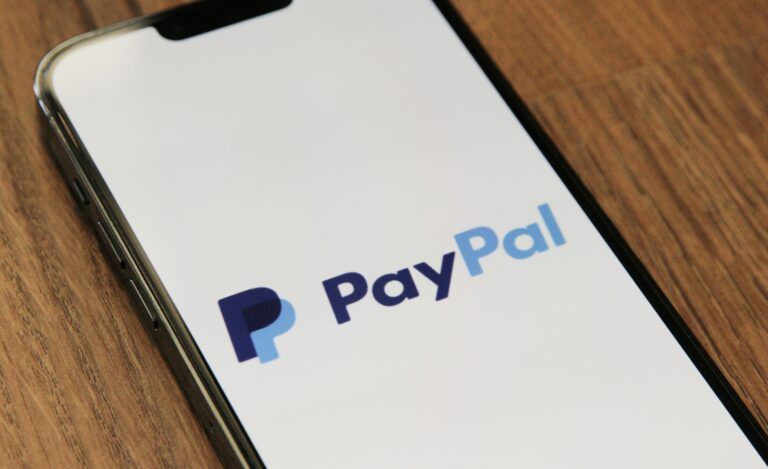It’s that time again! Let’s go through the biggest, most important, and best under-the-radar news pieces in the fintech industry from May 2024.
Secure your payment ecosystem with DirectPayNet.
Big News You Missed (Maybe)
I can’t guarantee that you missed any of these as they are big news pieces. But at any rate, here are the top five.
1. Mastercard and Visa Under Fire for Payment Processing Fees
When I heard that Mastercard and Visa were catching heat for their sky-high fees, I wasn’t surprised at all. I mean, these big players have had a stranglehold on the market for years, and small businesses have been paying the price.
It’s not just the fees themselves that are the problem, although those are definitely a major pain point. It’s also the lack of transparency and the complicated pricing structures that make it nearly impossible for the average small business owner to understand what they’re actually paying for.
But here’s the thing: small businesses are the backbone of our economy. We’re the ones creating jobs, driving innovation, and keeping our communities vibrant. So when big companies like Mastercard and Visa are squeezing us with these exorbitant fees, it’s not just hurting our bottom line – it’s hurting our entire economy.
I’m glad to see that this issue is finally getting some attention, and that there’s growing pressure on these companies to be more transparent and fairer in their pricing. I’m hopeful that the criticism of Mastercard and Visa will lead to some positive changes, I’m also excited to see what the future holds for payments. With more competition and innovation in this space, I think we could see some real benefits.
2. CFPB to Regulate Buy Now, Pay Later Industry
This is a huge development that could have major implications for both BNPL providers and consumers.
So here’s the deal: the CFPB has been looking into the BNPL space for a while now, and they’re concerned about a few key issues. First and foremost, they’re worried about the potential for consumers to take on too much debt through these loans. And let’s be real – it’s easy to see how that could happen.
BNPL loans are marketed as an easy, affordable way to make purchases and spread out the cost over time. But if you’re not careful, those small installment payments can really add up, especially if you’re using BNPL for multiple purchases at once.
The CFPB is also concerned about the lack of transparency in the BNPL industry. Unlike traditional credit cards, BNPL loans often don’t come with the same clear disclosures about interest rates, fees, and repayment terms. That can make it tough for consumers to fully understand what they’re signing up for and how much they’ll ultimately owe.
So to address these issues, the CFPB is planning to bring BNPL loans under the same regulatory umbrella as credit cards. That means BNPL providers will likely have to start providing more upfront disclosures to consumers, and they may face stricter oversight when it comes to underwriting and debt collection practices.
On one hand, I’m all for consumer protection and transparency. We have a responsibility to make sure our customers fully understand the products they’re using and the potential risks involved. But on the other, I worry that too much regulation could stifle innovation in the BNPL space. Part of what makes BNPL so appealing is its flexibility and ease of use compared to traditional credit. If we start layering on a bunch of complex rules and requirements, it could make the product less attractive and accessible to consumers.
3. Shopify’s Q1 Revenue Rises, but Growth Expected to Slow in Q2
Shopify knocked it out of the park with a whopping 23% year-over-year revenue growth, bringing in a cool $1.9 billion. But what really caught my attention was the 29% growth when you exclude the impact of their logistics business sale. It just goes to show that Shopify is killing it in their core business.
But here’s the thing – Shopify’s management threw a bit of a curveball during the earnings call. They warned that growth might slow down in the second quarter. Apparently, they’re expecting revenue to grow at a high-teens percentage rate compared to the same period last year. Now, that’s still pretty solid growth, but it’s a bit of a step down from the explosive numbers we saw in Q1.
So what’s behind this potential slowdown? Well, Shopify mentioned a couple of factors. For one, they’re lapping some pretty tough comparisons from last year when they rolled out some pricing changes that gave revenue a nice boost. Plus, they’re still feeling the impact of selling off their logistics business, which is creating a bit of a drag on overall growth.
Something to keep in mind: they’re already the go-to platform for millions of businesses around the world, and that number is only going to keep growing as more and more entrepreneurs jump into the online selling game.
So yeah, a slight slowdown in Q2 growth might raise some eyebrows on Wall Street. But Shopify’s got the vision, the talent, and the resources to keep crushing it for the long haul.
4. US Banking Giants Explore New Ledger-Based Settlement with Tokenized Assets
Some of the biggest names in the US banking industry, including JPMorgan, Mastercard, Wells Fargo, and others, are teaming up to test out a new way of settling transactions using shared-ledger technology.
Essentially, they want to create a system where assets like commercial bank money, Treasury securities, and investment-grade debt can all be converted into digital tokens and settled on a single, common platform. This is a huge deal because right now, all of these different assets are settled on separate systems. It’s like having a bunch of different languages being spoken in the same room – it’s confusing, inefficient, and prone to errors.
But by tokenizing these assets and putting them all on the same ledger, it could make the whole process a lot smoother and faster. The banks are calling this proof-of-concept the “Regulated Settlement Network” (RSN), and the goal is to simulate transactions in US dollars to see how it all works. They want to see if this kind of system could improve the way multi-asset settlements are handled for domestic users of US dollar-denominated financial instruments.
Now, I know what you might be thinking – isn’t this just another overhyped blockchain project? But these aren’t just any banks jumping on the bandwagon. These are some of the most influential players in the US financial system, and they’re putting serious resources behind this effort.
They’ve got experts from places like the Bank of New York Mellon and the International Swaps and Derivatives Association providing input, and they’re doing a deep dive into the legal and regulatory implications of this kind of system. Plus, this isn’t just a one-off experiment. It’s building on a previous 12-week trial that these same financial institutions did back in late 2022, where they tested out using shared ledgers for cross-border payment solutions and interbank transactions.
How will this system handle issues like privacy and security? What kind of governance model will they use? And will regulators give it the green light? We don’t know. But we’ll find out soon enough.
Under-the-Radar News You Missed
5. Community Banks Partner with Fintech Firms to Offer Digital Banking Services
I’m always excited to see community banks embracing partnerships with fintech companies to level up their digital banking game. This is a smart move that could help these smaller institutions stay competitive in a rapidly evolving financial landscape.
By teaming up with financial technology firms, community banks and credit unions can tap into cutting-edge technologies and innovative solutions without having to build everything from scratch in-house. This can be a game-changer when it comes to offering the kind of seamless, user-friendly digital experiences that today’s customers have come to expect.
From personal finance and digital wallet apps to online banking and beyond, these partnerships can help community banks expand their digital offerings and attract younger customers who might otherwise gravitate towards larger institutions with more robust digital capabilities.
Plus, by leveraging the agility and specialized expertise of fintech sector partners, community banks can often bring new digital financial services to market faster and more cost-effectively than they could on their own.
Of course, these partnerships also come with their own set of challenges and considerations, from regulatory compliance to data security and beyond. But with the right due diligence and a strategic approach, I believe that community bank-fintech partnerships have the potential to be a powerful force for positive change in the industry.
6. Blockchain Startup Launches Decentralized Identity Solution
A blockchain fintech startup launched a decentralized identity solution aimed at giving users more control over their personal data.
By putting users in control of their own personal data, this startup is tackling one of the biggest challenges we face in the digital age – privacy. With data breaches and identity theft on the rise, it’s clear that the old centralized models of identity management just aren’t cutting it anymore.
By leveraging the power of decentralized networks, this startup is creating a new paradigm for identity – one where users are the ultimate owners and controllers of their own data.
Imagine being able to choose exactly what information you share with each online service, without having to worry about it being sold to third parties or hacked from a central database. That’s the promise of decentralized identity.
Of course, building a solution like this is no easy feat. It requires cutting-edge cryptography, smart contract development, and a deep understanding of the complex web of regulations around personal data.
But if this startup can pull it off, the implications could be huge. We could see a future where individuals have much greater privacy and security online, while still being able to easily prove their identity when needed.
7. Fintech Lender Introduces AI-Powered Underwriting
This fintech lending platform has developed a cutting-edge artificial intelligence system that’s designed to streamline the loan application process and make risk assessment more accurate than ever before.
See, traditional underwriting can be a real pain. It’s slow, manual, and prone to errors. Loan officers have to sift through piles of paperwork, crunch numbers, and make subjective judgments about an applicant’s creditworthiness. It’s a time-consuming and inefficient process that can leave borrowers waiting for days or even weeks to get a decision.
But with this new AI-powered system, all of that changes. The platform can analyze vast amounts of data in real-time, using sophisticated algorithms to assess an applicant’s risk profile and make a decision in a matter of minutes. That means borrowers can get an answer faster, and lenders can process more applications in less time.
But it’s not just about speed – it’s also about accuracy. By leveraging machine learning and predictive analytics, this AI system can identify patterns and risk factors that human underwriters might miss. It can analyze everything from credit scores and income to social media activity and online behavior, painting a more comprehensive picture of an applicant’s financial health.
And here’s the really cool part: the more data the system processes, the smarter it gets. Over time, it can learn and adapt, refining its algorithms to make even more accurate predictions. That means lenders can make better decisions, reduce their risk exposure, and ultimately, offer more competitive rates and terms to borrowers.
Of course, there are still some challenges to overcome. Lenders need to ensure that their AI systems are transparent, fair, and free from bias. They need to work closely with regulators to ensure compliance with all applicable laws and regulations. And they need to invest in the right talent and infrastructure to support these complex systems.
8. Central Banks Explore Digital Currencies in Response to Crypto Adoption
With the rise of Bitcoin and other decentralized digital assets, it’s clear that there’s a growing demand for alternative forms of money that offer greater speed, efficiency, and accessibility than traditional fiat currencies.
But while cryptocurrencies have a lot of potential, they also come with their own set of risks and challenges, from volatility to regulatory uncertainty. That’s where central bank digital currencies (CBDCs) come in.
By issuing their own digital currencies, central banks can provide a more stable and trusted alternative to cryptocurrencies, while still leveraging the benefits of blockchain technology and digital payments.
Some of the key advantages of CBDCs include faster and cheaper cross-border transactions, greater financial inclusion for the unbanked and underbanked, and more effective monetary policy tools for central banks.
Of course, CBDCs also raise important questions around privacy, security, and the role of central banks in the digital age. But it’s encouraging to see so many central banks taking a proactive approach and exploring these issues head-on.
Anything else we missed?
What news from May grabbed your attention the most? We’re curious to know. Comment your piece below and feel free to expand on any of the news written in this post.









